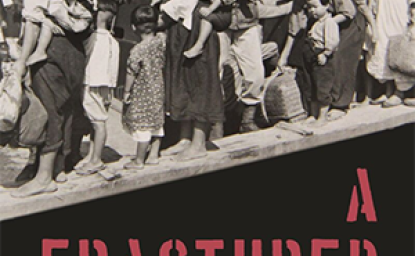Introduction to the Commentaries on the History of the Southern Resistance

John Prados, "Introduction to the Commentaries on the History of the Southern Resistance," review of Lịch sử Nam bộ kháng chiến (History of the Southern Resistance), edited by Hội Đồng Chỉ Đạo Biên Soạn Lịch Sử Nam Bộ Kháng Chiến, Cold War International History Project, October 2014.
What follows is an effort to evaluate the historical contributions made by the Vietnamese work History of the Southern Resistance (Lịch sử Nam bộ kháng chiến), published in Hanoi in 2010.[1] This multi-volume history, the ambitious product of a committee of Vietnamese academics, scholars, and historians, represented nothing less than an effort to reframe the story of the Vietnamese wars to accord full voice to the National Front for the Liberation of South Vietnam (NFLSV), the communist insurgent movement in South Vietnam which first took up arms against the Saigon government, but which is too often subsumed under the umbrella of the leadership of the Vietnamese Communist Party and the actions of North Vietnam, the Democratic Republic of Vietnam. The Cold War International History Project (CWIHP) of the Woodrow Wilson International Center for Scholars and the National Security Archive became aware of this project in 2008, when former United Nations official Lutz Baehr approached us. Lutz had long experience in Vietnam and knew a number of the Vietnamese involved in this project. Both our organizations sent representatives to a workshop in Ho Chi Minh City (the former Saigon), where we convened with a cross-section of the Vietnamese scholars working on the Southern Resistance project, as well as other Vietnamese historians.
At the time the Vietnamese wanted international participation and support for their project, and there were hopes for a major translation plus a global conference to be based upon this and other new histories. The Cold War International History Project and the National Security Archive were enticed by the possibility that this kind of an “official history” of the NFLSV might include, or lead to, the actual declassification and release, of archives of the insurgency which would then become available to researchers. When the German-American former official Lutz Baehr approached us, Christian Ostermann took the lead for CWIHP, and I did so for the National Security Archive. We were anxious to review the final product, the History of the Southern Resistance, before attempting to move ahead on translation of such a long work or underwriting an international conference.
The process took longer than anyone had expected and followed a lengthy period of delays. The Council of Direction for the History of the Resistance of South Vietnam (Hội Đồng Chỉ Đạo Biên Soạn Lịch Sử Nam Bộ Kháng Chiến) suffered setbacks when senior Vietnamese leaders who had been strong supporters, people like Nguyen Huu Tho, Vo Van Kiet, and Tran Bach Dang, either passed away or retired. There were the usual difficulties of getting contributors to complete their parts of a joint project, and of the Council editing the overall package. The Council’s product then had to pass muster with other Vietnamese historians to receive an official approval from the national government in Hanoi. Lutz Baehr’s commentary appended below offers the best insight into the creation of the history.[2] As an officially approved history it was produced by National Political Publishers (Nhà xuất bản Chính trị quốc gia), the Vietnamese Communist Party press. Here in the West, for a considerable time, we heard only tales of the history, which apparently sold out very quickly upon its May 2010 release. Copies became available in the United States sometime in 2012.
Once the volumes appeared here the Cold War Project and the Archive held a preliminary meeting to determine a way forward, and we listened as Lien-Hang T. Nguyen, who had accompanied us at the Ho Chi Minh City workshop, delivered her impressionistic report on the contents. We then decided to assemble a panel of area experts fluent in Vietnamese to assess the volumes. We were interested in the degree to which the History of the Southern Resistance relied upon documentary sources, the new source material it brought forward, and the fresh points of view it brought to our understanding of the French and American wars in Vietnam. By that time we no longer anticipated that the gates of the Vietnamese archives might open, but we still hoped the History would shed new light on important topics.
By the end of the year we had a list of candidates, and in the spring of 2013 we recruited our panel and supplied them with the necessary material to digest. The panelists gathered at the Wilson Center on September 17, 2013 to review the reports. Joining us was Dr. Nguyen Trong Xuat, the executive director of the Council of Direction for the History of the Southern Resistance. Our panelists included Shawn McHale of George Washington University, Nu-Anh Tran of the University of Connecticut, Pierre Asselin of Hawaii Pacific University, Sophie Quinn-Judge of Temple University, and Merle Pribbenow, retired from the Saigon Station of the CIA. It proved to be a lively discussion, with an impassioned appeal from Lutz Baehr, comments from Dr. Xuat, and the panelists giving their opinions.
The essence of those exchanges you have before you now. Dr. Xuat’s remarks focused on the history of the Vietnam war, not on his group’s book about the National Front for the Liberation of South Vietnam. He poses classic historical questions about the American war that are still debated. Xuat’s concerns furnish a good index of the issues which preoccupy Vietnamese of the wartime generation. .[3] Lutz Baehr fleshes out the origins of the bookLiberation Front history project.[4] All the other scholars focused on the study’s contents. They have found new things in the history books, but the panelists also found shortcomings as well. Pribbenow’s commentary probably offers the best overview of the published work, summarizing contents, listing numbers of pages and so forth. He was most impressed with passages which confirm the view that Hanoi party leaders erred in holding back the southern resistance cadres, and finds an actual document in the appendix which details these errors. Pribbenow also found the history’s account of the Tet Offensive of interest, as well as its descriptions of events in South Vietnam immediately after the entry into force of the Paris agreements of 1973.[5] Interestingly, in an August 2012 message to our group (which, unlike his comments at the September meeting, actually discussed the book), Dr. Xuat had referred to the same episodes as significant historical contributions.
Merle Pribbenow nevertheless observed that the history is very much an institutional document.[6] One can read its 2,500 pages (more then 4,800 with all the associated chronologies and appendices) without getting much at all of an impression of such crucial southern resistance leaders as Nguyan Van Binh, Nguyen Huu Tho, Vo Van Kiet, Tran Bach Dang, or others. (I myself find this kind of sparseness of personal detail somewhat characteristic of Vietnamese historical writing.) Merle also found skimpy accounts of such important events as NFLSV participation in the Paris peace talks or the formation of the Provisional Revolutionary Government of South Vietnam. Shawn McHale agrees the treatment seems based on conventional sources without much in the way of a documentary basis, and finds the account neither balanced nor comprehensive.[7] Nu-Anh Tran observes that “the authors’ quest for a comprehensive history is at odds with their belief in the communists’ exclusive legitimacy,” complaining of the text’s politically-charged jargon—in common with wartime DRV and NFLSV propaganda writing—vilifying other groups. The result, she feels, is a history of the communist party during the war, not really a history of the resistance.[8] Pierre Asselin finds that the history says little about Soviet or Chinese relations with Vietnam, and provides an orthodox account of communist activity in the 1963-1965 period.[9] Sophie Quinn-Judge worries that scholars who identify with the Saigon government may not accept the History of the Southern Resistance as an authentic southern voice.[10]
For all that, our analysts find things of value too. McHale, who focused on the first volume, which centers on the French war, writes “never before has the Resistance War against the French in the South been explored in such detail.” For American readers there is fresh material in a detailed recitation of events surrounding the death of Peter Dewey, an officer of the American OSS whose death in the fall of 1945 marked the first U.S. casualty of the Vietnam War.[11] Nu-Anh Tran also looked hard at this portion of the history and finds it both “refreshing” and of “impressive breadth.”[12] Both commentators have historical objections to make, singling out especially the NFLSV’s actions vis a vis the politico-religious sects, but I shall leave the reader to delve into the details. Pierre Asselin finds “excellent” the narrative for the period right after the 1954 Geneva accords.[13] And Sophie Quinn-Judge presents a fairly detailed recitation here of material from the book on the run up to the Tet Offensive that is quite intriguing in its implications.[14]
We offer these commentaries as the start of an online dialogue with which an international community of scholars who have reviewed these issues and this history—construed widely, not simply confined to the History of the Southern Resistance—and can take the analysis, observations, and data we now have to broaden our understanding of the dynamics of insurgency in Vietnam as well as the revolutionary politics of the Resistance War.
Click Here to Return to the Symposium on the History of Vietnam's Southern Resistance
[1] Hội Đồng Chỉ Đạo Biên Soạn Lịch Sử Nam Bộ Kháng Chiến, ed., Lịch sử Nam bộ kháng chiến (History of the Southern Resistance), 4 vols. (Hà Nội: Nhà xuất bản Chính trị quốc gia, 2010).
[2] Lutz Baehr, "The Resistance in South Vietnam following the 'Geneva Convention,'" review of Lịch sử Nam bộ kháng chiến (History of the Southern Resistance), edited by Hội Đồng Chỉ Đạo Biên Soạn Lịch Sử Nam Bộ Kháng Chiến, Cold War International History Project, October 2014.
[3] Nguyen Trong Xuat, "Some Clarifications on Lịch sử Nam bộ kháng chiến," review of Lịch sử Nam bộ kháng chiến (History of the Southern Resistance), edited by Hội Đồng Chỉ Đạo Biên Soạn Lịch Sử Nam Bộ Kháng Chiến, Cold War International History Project, October 2014.
[4] Baehr, "The Resistance in South Vietnam following the 'Geneva Convention,'" review of Lịch sử Nam bộ kháng chiến.
[5] Merle Pribbenow, "Dau Voi, Duoi Chuot (Head of an Elephant, Tail of a Mouse)," review of Lịch sử Nam bộ kháng chiến (History of the Southern Resistance), edited by Hội Đồng Chỉ Đạo Biên Soạn Lịch Sử Nam Bộ Kháng Chiến, Cold War International History Project, October 2014.
[6] Pribbenow, "Dau Voi, Duoi Chuot (Head of an Elephant, Tail of a Mouse)," review of Lịch sử Nam bộ kháng chiến.
[7] Shawn McHale, "Caught Between Propaganda and History," review of Lịch sử Nam bộ kháng chiến (History of the Southern Resistance), edited by Hội Đồng Chỉ Đạo Biên Soạn Lịch Sử Nam Bộ Kháng Chiến, Cold War International History Project, October 2014.
[8] Nu-Anh Tran, "History of the Southern Resistance or History of the Communist Resistance?: Vietnam’s Official Interpretation of the Resistance War (1945-1954) in the South," review of Lịch sử Nam bộ kháng chiến (History of the Southern Resistance), edited by Hội Đồng Chỉ Đạo Biên Soạn Lịch Sử Nam Bộ Kháng Chiến, Cold War International History Project, October 2014.
[9] Pierre Asselin, "Lịch sử Nam bộ kháng chiến and the Interwar Period," review of Lịch sử Nam bộ kháng chiến (History of the Southern Resistance), edited by Hội Đồng Chỉ Đạo Biên Soạn Lịch Sử Nam Bộ Kháng Chiến, Cold War International History Project, October 2014.
[10] Sohpie Quinn-Judge, "The Urban Movement and the Planning and Execution of the Tet Offensive ," review of Lịch sử Nam bộ kháng chiến (History of the Southern Resistance), edited by Hội Đồng Chỉ Đạo Biên Soạn Lịch Sử Nam Bộ Kháng Chiến, Cold War International History Project, October 2014.
[11] McHale, "Caught Between Propaganda and History," review of Lịch sử Nam bộ kháng chiến.
[12] Tran, "History of the Southern Resistance or History of the Communist Resistance?: Vietnam’s Official Interpretation of the Resistance War (1945-1954) in the South," review of Lịch sử Nam bộ kháng chiến.
[13] Asselin, "Lịch sử Nam bộ kháng chiến and the Interwar Period," review of Lịch sử Nam bộ kháng chiến.
[14] Quinn-Judge, "The Urban Movement and the Planning and Execution of the Tet Offensive ," review of Lịch sử Nam bộ kháng chiến.
Author

Cold War International History Project
The Cold War International History Project supports the full and prompt release of historical materials by governments on all sides of the Cold War. Read more




